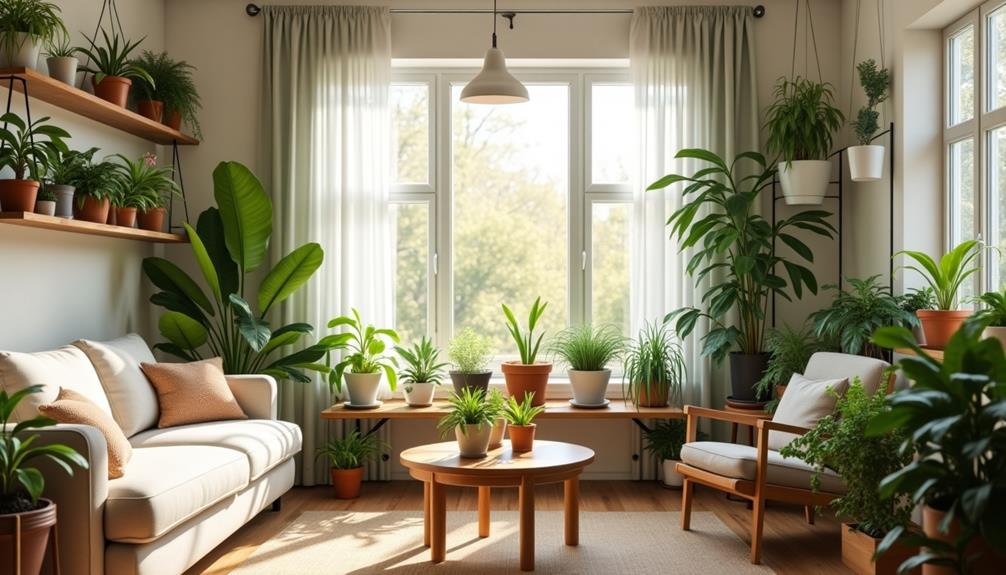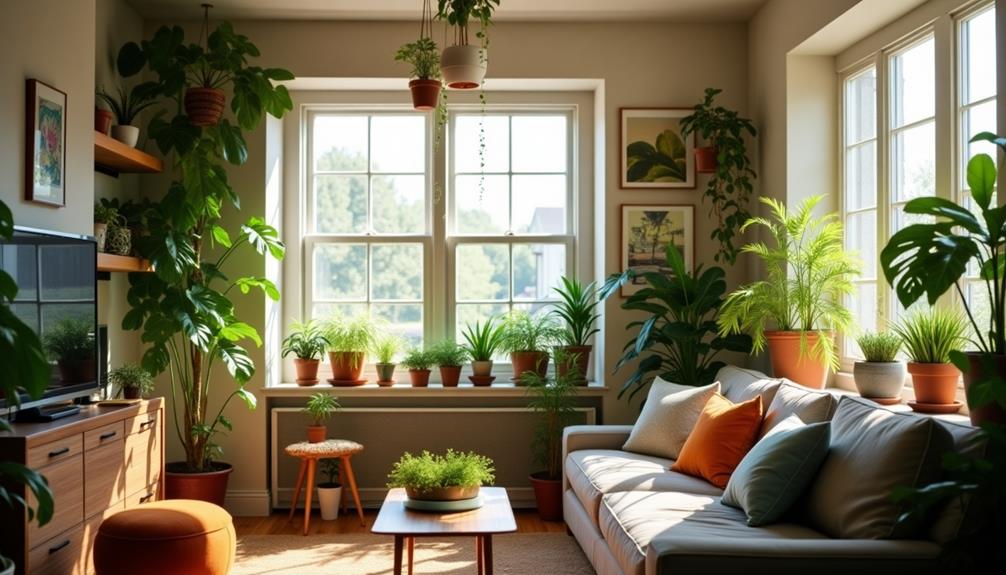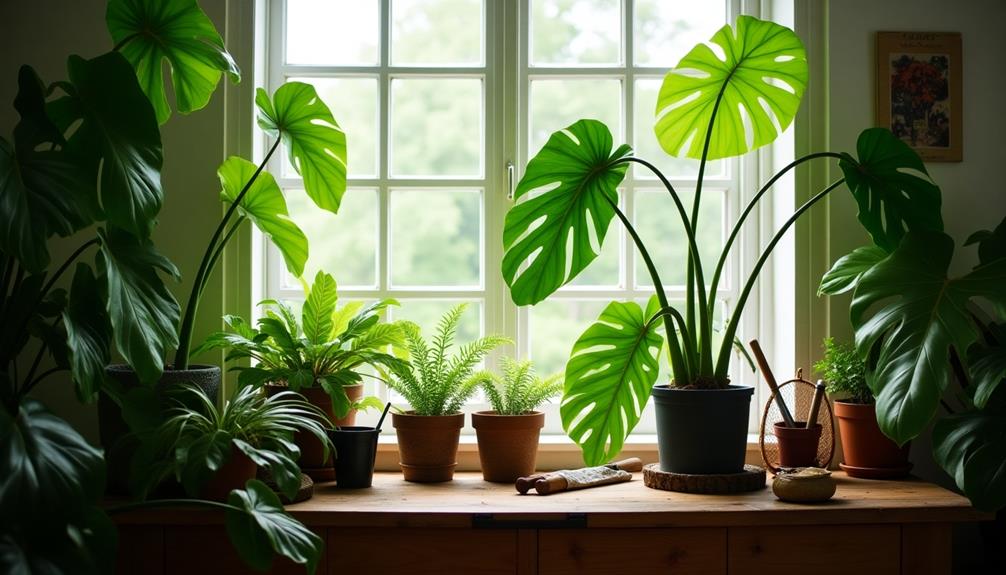A chaotic room often contrasts sharply with a child's vibrant imagination. You might wonder how to transform that cluttered space into an organized haven that promotes creativity and focus. By assessing the layout and understanding your child's needs, you can create functional zones for play and study. However, the real challenge lies in maintaining that organization over time, especially as your child grows and their interests change. What strategies can you implement to ensure the room remains a supportive environment for both learning and leisure?
Assessing the Space

Before diving into the organization process, take a moment to assess the space. Start by measuring the space dimensions of the room. Knowing how much area you're working with is crucial for effective organization.
Once you have those numbers, visualize how the furniture layout can maximize both functionality and comfort.
Look at the existing furniture. Is it oversized for the room? Would rearranging it create more open areas for play? Consider the flow of movement; you want to ensure your child can easily navigate the room without bumping into things.
Next, think about the purpose of each area. Is there a dedicated spot for studying, playing, and sleeping? If not, you might need to rethink the furniture layout to carve out these essential zones.
Decluttering Strategies
To get started with decluttering your kids' room, you'll want to sort and categorize their items first.
Create donation bins for things they no longer use, making it easier to decide what to keep.
Sort and Categorize Items
Decluttering a kids' room can feel overwhelming, but sorting and categorizing items makes the process manageable. Start by sorting toys into specific groups—like stuffed animals, action figures, and building blocks. This not only clears space but also helps your child understand where everything belongs.
Next, tackle clothes by categorizing them into sizes and seasons. This way, you can easily identify what fits and what can be stored away or donated.
When it comes to organizing books, create designated shelves based on themes or reading levels. For art supplies, group items like crayons, markers, and paper together, making it easy for your child to find what they need.
Don't forget to label bins clearly; this encourages kids to put things back in their proper place. As you arrange games, prioritize items based on how often they're played with, keeping the favorites easily accessible.
Lastly, consider managing seasonal storage by designating a bin for out-of-season clothing or toys. By sorting and categorizing, you set the stage for an organized, functional kids' room that encourages responsibility and creativity.
Create Donation Bins
Once you've sorted and categorized items, it's time to address what your child no longer uses or needs. Creating donation bins is a fantastic way to declutter while teaching your child the importance of giving.
Start by establishing your donation criteria—decide what items are in good condition and can be shared with others.
Next, grab some bins and label them clearly. Use bin labels like "Toys," "Books," or "Clothes" to make the process easier for your child. Encourage them to participate by selecting items that fit the donation criteria. This not only helps them understand the value of their possessions but also empowers them to make decisions.
As your child fills each bin, remind them that their items can bring joy to other kids.
Once the bins are full, schedule a drop-off at a local charity or donation center. This final step creates a sense of accomplishment and reinforces the value of decluttering.
Implement Storage Solutions
Amidst the chaos of toys and clothes, implementing effective storage solutions can transform your child's room into a tidy sanctuary. Start by evaluating the layout of the room and consider shelf placement. Use vertical space by installing shelves at varying heights. This not only maximizes storage but also makes it easier for your child to reach their favorite items.
Incorporate multi-functional furniture into the design. Look for beds with built-in drawers or ottomans that open up for storage. This approach minimizes clutter while adding style.
You can also use bins or baskets to organize smaller items. Label each container to encourage your child to return things to their proper places.
Utilize clear storage boxes for visibility, allowing you and your child to see what's inside without rummaging through piles. Encourage your child to participate in the organization process, teaching them the importance of maintaining a tidy environment.
With thoughtful storage solutions, you'll create a room that's not only functional but also inviting, helping your child develop good habits that last a lifetime.
Smart Storage Solutions
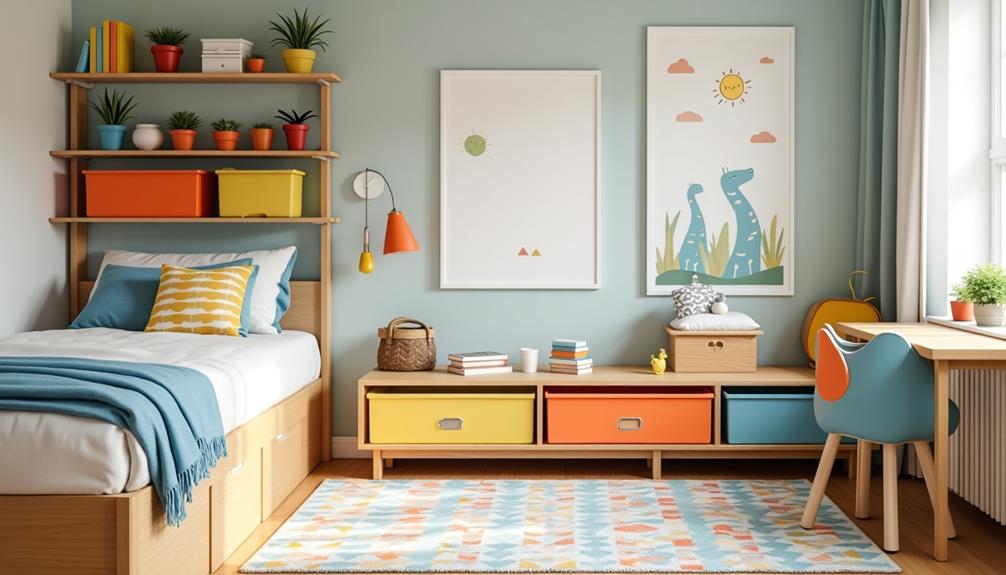
Finding creative ways to maximize space in your kids' room can make all the difference in keeping it organized. Start with shelf organization; use adjustable shelves to customize the height based on your child's needs. Clear bins or labeled baskets can help you separate toys, books, and art supplies, ensuring everything has a designated spot. This not only keeps the room tidy but also teaches your kids responsibility.
Incorporate a toy rotation system to prevent clutter from overwhelming the space. By regularly swapping out toys, you keep the room fresh and engaging. For instance, designate a few toys for active play while storing others away. When it's time for a change, simply rotate them. This method not only reduces mess but also reignites interest in forgotten toys.
Don't forget to utilize vertical space. Wall-mounted organizers or pegboards can hold everything from craft supplies to hats and bags. By thinking outside the box and implementing these smart storage solutions, you'll create a functional and organized environment that encourages your kids to keep their space tidy.
With these strategies, you'll foster a love for organization in your child that can last a lifetime.
Designating Activity Zones
To create an organized kids' room, start by defining specific play areas and study spaces.
By doing this, you help your child understand where to focus on fun and where to buckle down on homework.
This separation not only keeps the room tidy but also promotes a more productive environment.
Define Play Areas
Creating distinct play areas within your child's room can significantly enhance their ability to focus and engage in various activities. By defining specific zones, you can cater to different play area types, such as a reading nook, a craft corner, or a designated space for building toys. Each area serves a unique purpose and encourages your child to explore their interests.
The benefits of play extend beyond mere fun; they foster creativity, improve motor skills, and enhance social interactions when children engage in imaginative play with friends.
To set up these zones, use furniture, rugs, or even curtains to delineate spaces. For example, a cozy bean bag chair and a small bookshelf can transform a corner into a reading haven, while a sturdy table and art supplies can create a vibrant craft area.
Make sure to involve your child in the process. Ask them what types of play they enjoy and how they'd like their space organized. This not only empowers them but also creates a room that reflects their personality and encourages their development through play.
An organized room with defined areas can make all the difference in your child's play experience.
Create Study Space
After establishing play areas, it's important to carve out a dedicated study space in your child's room. This space should serve as a distraction-free zone, allowing them to focus on their schoolwork.
Start by choosing comfortable seating that supports good posture, ensuring your child can concentrate for longer periods. Incorporate focused lighting to reduce eye strain during homework sessions.
Think about a flexible layout that adapts as your child's needs change—perhaps a desk that can be easily moved or expanded as they grow.
Make sure to stock the area with essential study materials and organization tools, like bins and shelves, to keep everything tidy. Consider adding creative decor that reflects their personality, which can boost motivation and make the space inviting.
Integrate technology wisely; a charging station for devices can keep distractions at bay while promoting time management skills.
Lastly, implement motivation techniques, like a reward system for completed tasks, to encourage consistent study habits.
Involving Your Child
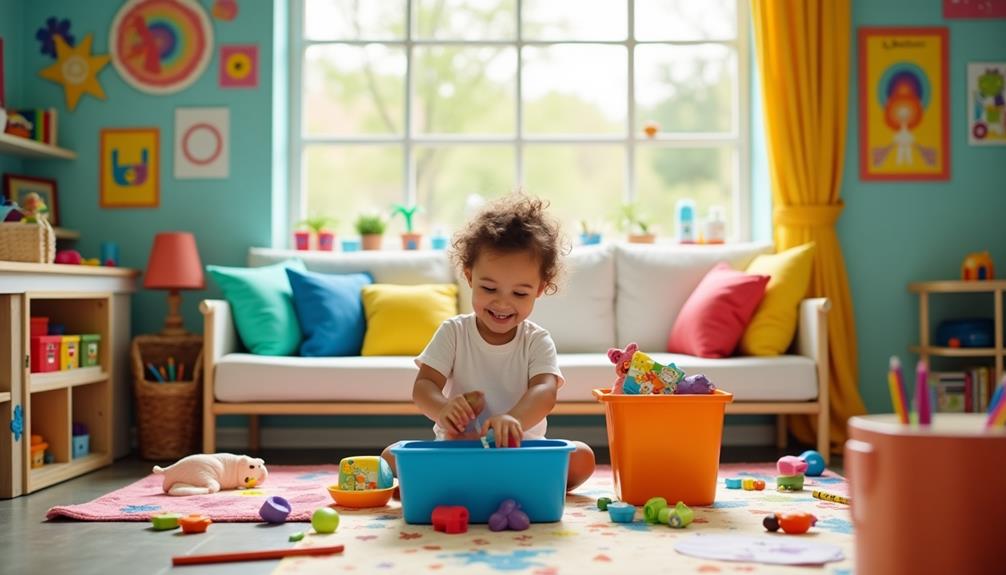
When you involve your child in the organization process, it not only makes the task more enjoyable but also teaches them valuable skills. Start by having a conversation about child preferences. Ask them what items they want to keep, what they use most, and how they envision their space. This gives them ownership and makes the organization feel personal.
Next, engage in collaborative planning. Together, decide on the layout of their room, which areas will be used for play, study, or relaxation. This teamwork fosters a sense of responsibility and helps them understand the importance of an organized space.
Encourage them to categorize their belongings, whether it's toys, books, or art supplies, and let them choose storage solutions that appeal to them. As you work side by side, explain the benefits of organization—how it helps them find things easily and keeps their space tidy.
Celebrate small victories along the way, reinforcing their efforts and making it a fun experience. By involving your child in this process, you're not just organizing a room; you're equipping them with skills that will benefit them for years to come.
Personalizing the Room
Personalizing the room transforms it into a space that truly reflects your child's personality and interests. Start by choosing color schemes that resonate with them; vibrant hues can energize the space, while softer tones create a calm environment.
Incorporate themed decor based on their favorite characters, whether it's superheroes, animals, or fairy tales. Encourage your child to showcase their personal artwork, turning the walls into a gallery of their creativity.
Wall decals can add playful elements, and name displays can make the room feel uniquely theirs. Select functional furniture that not only fits the theme but also serves a purpose.
Consider pieces that offer storage, like beds with drawers or bean bags that double as storage. Creative lighting can dramatically change the atmosphere—think fairy lights or fun lamps that complement the decor.
Don't forget to add inspirational quotes that motivate and encourage them. Growth charts can be a fun way to track their progress while adding a personal touch.
Maintaining Organization

Maintaining organization in your child's room is crucial for fostering a productive and stress-free environment. To achieve this, encourage your child to develop strong organization habits. Start by setting clear expectations about where items belong. Create designated spaces for toys, books, and clothes, making it easier for your child to know where to put things away.
Incorporate routine maintenance into your weekly schedule. Dedicate a few minutes each day for your child to tidy up their space. This habit not only keeps the room organized but also instills a sense of responsibility. You can make it fun by turning cleanup into a game or setting a timer for a quick tidy-up challenge.
Don't forget to involve your child in the process. Ask for their input on organization systems, so they feel ownership over their room.
Regularly reassess their needs and adjust the organization strategies as they grow. By maintaining these habits and routines, you'll help your child cultivate a space that's always ready for creativity and relaxation, making it easier for them to focus on what truly matters—play and learning.
Tips for Future Changes
As your child grows, it's essential to shake things up in their room to accommodate changing interests and needs. Start by regularly assessing their evolving interests. If they've developed a passion for art, create a designated art station with supplies easily accessible. If they're into sports, consider adding shelves for gear or a bulletin board for their achievements.
Next, think about future needs. Kids grow quickly, and their storage requirements will shift as they accumulate more toys, books, and clothes. Invest in flexible storage solutions like bins or baskets that can be repurposed as their interests change. This way, you won't have to overhaul the entire room as they transition through different phases.
Encourage your child to participate in these changes. Ask for their input on colors or themes; it'll make them feel more invested in their space.
Lastly, schedule regular clean-ups together. This not only keeps the room organized but also teaches your child valuable skills for maintaining a tidy environment. By planning for their future needs and adapting to evolving interests, you can create a room that grows with them.



